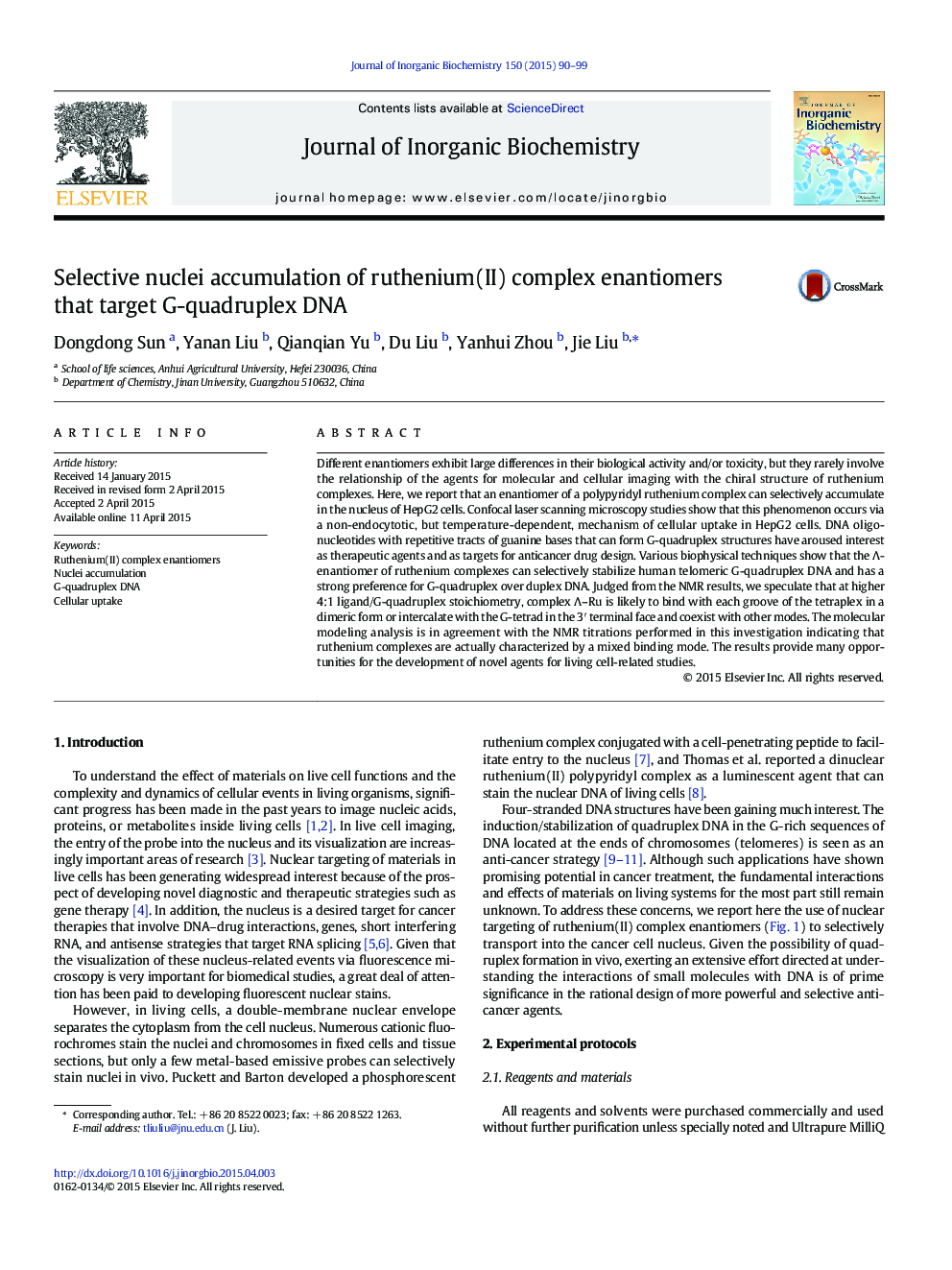| کد مقاله | کد نشریه | سال انتشار | مقاله انگلیسی | نسخه تمام متن |
|---|---|---|---|---|
| 1315857 | 1499437 | 2015 | 10 صفحه PDF | دانلود رایگان |

• An enantiomer of a polypyridyl ruthenium complex can selectively accumulate in the nucleus of HepG2 cells.
• Λ–Ru complex is taken up by live cells via a structure-specific and temperature-dependent non-endocytotic mechanism.
• Λ–Ru and Δ–Ru complexes exhibit a significant preference for G-quadruplex over duplex DNA.
Different enantiomers exhibit large differences in their biological activity and/or toxicity, but they rarely involve the relationship of the agents for molecular and cellular imaging with the chiral structure of ruthenium complexes. Here, we report that an enantiomer of a polypyridyl ruthenium complex can selectively accumulate in the nucleus of HepG2 cells. Confocal laser scanning microscopy studies show that this phenomenon occurs via a non-endocytotic, but temperature-dependent, mechanism of cellular uptake in HepG2 cells. DNA oligonucleotides with repetitive tracts of guanine bases that can form G-quadruplex structures have aroused interest as therapeutic agents and as targets for anticancer drug design. Various biophysical techniques show that the Λ-enantiomer of ruthenium complexes can selectively stabilize human telomeric G-quadruplex DNA and has a strong preference for G-quadruplex over duplex DNA. Judged from the NMR results, we speculate that at higher 4:1 ligand/G-quadruplex stoichiometry, complex Λ–Ru is likely to bind with each groove of the tetraplex in a dimeric form or intercalate with the G-tetrad in the 3′ terminal face and coexist with other modes. The molecular modeling analysis is in agreement with the NMR titrations performed in this investigation indicating that ruthenium complexes are actually characterized by a mixed binding mode. The results provide many opportunities for the development of novel agents for living cell-related studies.
Here, we report the new example that one enantiomer of a polypyridyl ruthenium complex Λ–Ru can selectively enter the nuclei of HepG2 cells and Δ–Ru only accumulates the cytoplasm.Figure optionsDownload as PowerPoint slide
Journal: Journal of Inorganic Biochemistry - Volume 150, September 2015, Pages 90–99